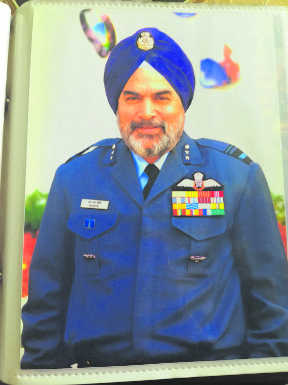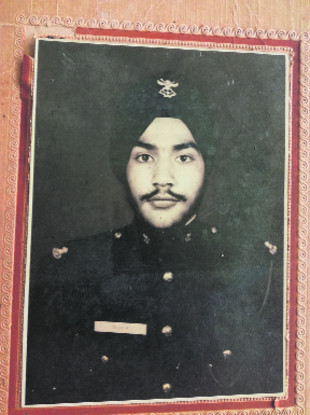
Air Vice Marshal Sarvjit Hothi (retd)
Deepkamal Kaur
Tribune News Service
Jalandhar, September 30


As there are reports of India set to deploy the recently bought Rafale combat jets for warfare in the next year or so, a retired Air Vice Marshal from Jalandhar today shared his 1971 wartime experiences as part of the 10-member pilot crew selected in the then considered elite light fighter aircraft Gnat.Air Vice Marshal Sarvjit Hothi (retd) was inducted in the Indian Air Force (IAF) in December 1969. He recounts, “We were still training at Jamnagar and increasing our flying hours to be fully operational when the war came. I was among the select pilots who got picked up for flying Gnats. We were inducted in the 2 Squadron that was then based at Ambala. Amritsar was our forward base, just 25 km from the border.”Discussing Gnats, he said these had a very special feature. “Like the way there have been orders of being operation-ready now wherein two pilots have to be seated in aircraft in their overhauls and properly strapped, we too were then expected of being airborne in five minutes. In Gnats, we could take off in two minutes as there were no ladders required and we could jump in straight. A bigger advantage was that their engine got started in less than 40 seconds compared to 2-minute time taken in an MiG 21. This gave us a big advantage because aircraft from the Pakistan side came flying low and could not even be detected by radars. They used to be quite close when we got orders to start off from here,” he said about the thrilling experience as a new flying officer.“Since there was no night vision in the Gnat compared to much sophisticated jets now, only blind bombing could be possible.” He drew another comparison, “IAF had MiG 21s and Sukhoi 7s then too,” he recalled.Having taken 14 missions during the war, Hothi has enough points to spice up the conversation. “Believe me, one day when I had just taken off, I saw a Mirage just pass by on the gunside. My commander gave orders to me to shoot him off. But since my speed was just 180 mph, which was far too less and there was another Gnat following me, I could neither turn back nor was capable of overtaking it. By the time I was in attack mode, I was already over Lahore. Some split-second decisions with much precision were then required. Had I been able to attack the Mirage, I would have come as a hero, as so far no Mirage had ever been bombed,” he claimed.He also recounted his conversations with PVC awardee Flying Officer Nirmal Jit Sekhon. “A simple man, we used to call him ‘brother’. There were some nerve-chilling times too, but we overcame these, saying it to ourselves that even if we die, it will be others and not ourselves who would be crying,” said the IAF officer as he adds up another story, “Since we did not go on mission everyday, I once sat on a bike in an overhaul and came down to my home in Jalandhar. With war raging, there were roadside chhabeels. As people saw me in the IAF uniform, they saluted me and even took out cameras to take a photograph with me.”Hothi, who has VM and VSM to his credit, has had various postings in striking airforce bases at Halwara and Adampur. “I was commanding three squadrons at Halwara when the Kargil war came. As many as 30 per cent bombings were done by MiG 23 and 27 pilots there.”He adds on, “I have also been flying to Siachen for a year and have a Siachen medal too that I proudly hang in my room.”The first batch alumnus from Sainik School Kapurthala also remembers his number 052. “I was in the first batch of 200 students and have very fond memories of the school. I go there for functions often,” he said.Hothi said unlike other officers, he flew sorties even around the time of his retirement. “I never wanted the feeling of old age creep in me. Besides, this helped in enthusing motivation in the Squadron pilots.”After getting relieved in October 2007, he joined the Air India as a pilot as their retirement age was increased to 65. “At 58, I undertook training in Mumbai and sat in the class of pilots aged between 20 and 22. I competed with them in Monday tests for 10 months. Having no knowledge of computers, I was made to sit before simulators which had the most sophisticated computers. But it all was a new challenge wherein I had to defy age bar,” he laughed.“Another experience came when Air India bought new Boeing 737 aircraft which we were to fly to Singapore, Dubai or Japan. It was during a flight to Dubai that I saw a memorable view of a lit-up LoC, which was not the scene during the days we flew fighter jets during our IAF tenure,” he summed up.
